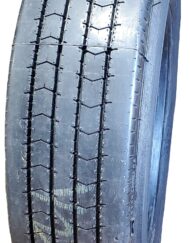What is TPMS and How do I Know if My Vehicle is Equipped with TPMS?
You may have heard about a vehicle feature called TPMS, which stands for tire pressure monitoring system, but you may not yet be aware of the many benefits of this feature, or how you can determine whether your vehicle is equipped. This system is designed to make driving safer and also more economic. If you’d like to learn more about TPMS, here are some of the basics.
What is TPMS?
The TPMS is an electronic monitoring system that keeps track of your vehicle’s tire pressure. Cars and trucks that are equipped with TPMS have an indicator on the dashboard instrument panel that illuminates to let the driver know that one or more tires are significantly under-inflated. Tires that are not properly inflated can cause a number of hazards, including in an increased chance of blowout. The low tire pressure indicator is a yellow symbol that resembles a horseshoe with an exclamation point.
What are the benefits of TPMS?
Prior to the rollout of tire pressure monitoring systems, drivers often failed to realize that their tire pressure was low which led to increasingly dangerous conditions while driving. Improper tire pressure resulted in a great number of accidents – most of which could have easily been avoided had the driver been aware of when to check tire pressure and adjust the inflation level accordingly.
In response to this growing risk, the US government drafted and passed what’s known as the Transportation Recall Enhancement, Accountability, and Documentation (TREAD) Act. One of the most significant outcomes of this legislation is that the majority of vehicles sold in the US since the year 2007 now include a TPMS of some kind.
How do I know if my vehicle has a TPMS?
There are a number of different methods for determining whether a particular vehicle is equipped with a system for monitoring the air pressure in tires. The quickest and easiest way is to check your vehicle’s owner’s manual, which will include information on the feature and how it works. If you do not have the owner’s manual or it’s not easily accessible, you can check the vehicle itself for a TPMS. With many vehicles, the entire dashboard lights up upon startup. Check for the symbol there.
You may also bring your vehicle to either a mechanic or a tire professional who can not only determine whether it’s equipped with TPMS, but also test the sensors to verify that they are working properly. It’s important to note that a TPMS cannot be bypassed or disabled, so if your system is not working properly, it will need to be reprogrammed accordingly.
For more information on proper air pressure in tires or any other tire-related topic, please visit our blog or contact us today.




